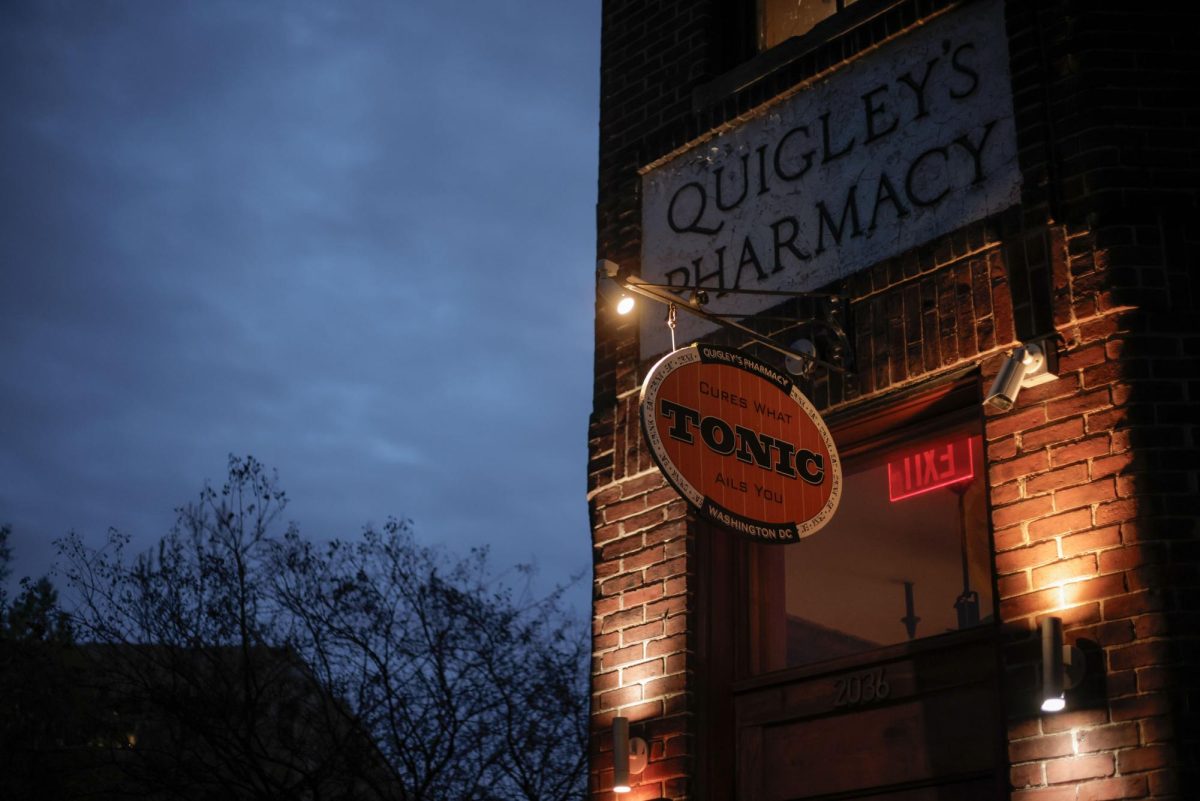Five years after the COVID-19 pandemic halted restaurant operations across the country, eateries in Foggy Bottom and across D.C. are still trying to hit pre-pandemic sales amid federal cuts and rising operating costs.
The Restaurant Association of Metropolitan Washington reported on March 18 that 71 percent of D.C. restaurants have reduced their workforces in 2024, citing simultaneously falling sales and escalating food costs. Foggy Bottom restaurant owners said foot traffic slowdowns, rising food costs, federal layoffs and higher tipped wages have contributed to lagging business, causing some to cut hours and staff.
“We try to cut labor as much as we can without sacrificing service,” said Leo Padla, the general manager of Circa in Foggy Bottom.
The RAMW report surveyed 217 independently owned, full-service restaurants in D.C. between Jan. 24 and Feb. 11, stating that President Donald Trump’s first 100 days worsened challenges for District businesses. The report states 82 percent of D.C. restaurants fear tariffs will raise costs and 73 percent expect to be impacted negatively by the federal layoffs.
The hit to local restaurants also follows D.C. Council’s passing of Initiative 82 in January 2023. I-82 gradually raised the minimum wage for tipped workers to match the universal minimum wage in D.C., boosting wages from $6 to $8 in July 2023, which some Foggy Bottom business owners said increased their operating costs.
Padla said sales in the first three months of 2025 declined by about 10 percent compared to the same period in 2024, which he attributed to the rising cost of living that discourages people from eating out.
Padla said mass layoffs of probationary federal employees is also impacting Circa’s restaurant sales, especially during happy hour and lunch hours when federal employees typically flock to the Foggy Bottom restaurant to dine and drink. But he said workers returning to in-person work evens out the fluctuations in business.
“It definitely has affected the flow,” Padla said.
Padla said despite the rising operational costs and reduced hours for staff, the restaurant broke its sales record late last month due to the influx of tourists attending the Cherry Blossom festival.
He added that Circa’s on-campus location also helps support a constant business flow from students and families.
“We’ve been here long enough to where we have relationships with a lot of the people in the area that always come,” Padla said.
Michael Carroll, the manager of sit-down Indian restaurant Bindaas in Foggy Bottom, said Bindaas let go about 40 percent of its employees since 2020. Carroll said the restaurant has also seen a drop in sales following the pandemic, which Carroll attributed to the rising cost of living.
The Bureau of Labor Statistics reported that the Consumer Price Index increased by 3 percent from January 2024 to January 2025. Food prices increased by 2.5 percent from 2024, according to the report.
Carroll said I-82, which boosted wages of tipped workers, has further heightened operating expenses for the restaurant. He said Bindaas also raised the price on their service last summer by implementing an automatic 20 percent gratuity fee on their menu.
“I believe it was good for the back of the house because they’re actually making a minimum wage now,” Carroll said of I-82. “But for my alley employees, I can’t afford more than eight because I can’t keep paying them minimum wage and also tipping them out.”
Carroll said tariffs also doubled the prices of goods, like Indian wines and spices, which are key ingredients in dishes featured on the menu. He said Bindaas was unable to add a selection of Indian wine to the menu because of the tariffs placed on its distribution.
“We can’t get them because the tariffs are too high,” Carroll said.
In July 2025, D.C. restaurant wages are slated to be bumped to $12 through I-82, which Foggy Bottom restaurant owners said will cost them more while balancing operational costs.
But Carroll said he cannot accommodate the surge in demand for jobs because of the rising costs due to tariffs, lower sales due to the sweeping federal employee layoffs and the high cost of labor because of I-82.
“I just don’t have the work because I cannot afford to pay this many people,” Carroll said.
Jeremy Pollok, an owner of Foggy Bottom’s Tonic at Quigley’s, said his business has been down by 20 percent since the COVID-19 pandemic. He said his overall staff shifted from an average of 80 to 90 employees before the initiative’s passage to between 70 to 80 staffers directly after it.
Pollok also said he had to reduce staff hours and add an optional service charge to customers’ bills, following the lead of other District restaurants.
“It’s been like one punch after the other over the last several years,” Pollok said
Pollok said I-82 works out like a struggle for equilibrium: When wages go up, so do operating costs. To balance the costs of running Tonic, Pollok said instead of two hosts, they’ve downscaled to one per shift, who makes more money than they would if they both were on shift.
“It’s a math problem,” Pollok said.
The report states that RAMW’s predictive modeling found that if tipped wages increase by another 20 percent in July, restaurant closures will spike by 50 percent, slowing the overall industry job growth by 2 percent.
Delia Sullivan, a front-of-house tipped worker at the cafe chain Tatte in Foggy Bottom, said for the Foggy Bottom location where college students are less prone to tip, I-82 raised wages for workers.
“I think increasing it will definitely help them get the people they need. As a business, it does fine,” Sullivan said.











